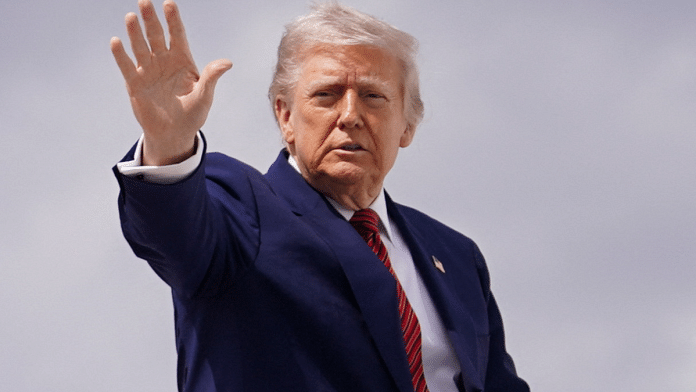Thank you dear subscribers, we are overwhelmed with your response.
Your Turn is a unique section from ThePrint featuring points of view from its subscribers. If you are a subscriber, have a point of view, please send it to us. If not, do subscribe here: https://theprint.in/subscribe/
There was a time when democracy and autocracy were seen as opposites not just ideologically, but morally. But in the 21st century, that binary feels increasingly blurred, One stood for the collective will, the other for concentrated power. And nowhere is this distortion more evident than in the way some autocracies wear democratic veneers, and how democracies flirt with authoritarian impulses.
It is in this uncomfortable twilight that two ideas intersect “democracy in autocracy” and “tariff in Trump world.” They seem unrelated. One is about political structure, the other about economic policy. But at their core, both deal with power and perception and how those who hold power shape public perception to maintain it.
Democracy’s Mask in Authoritarian Realms
Elections are still held in Russia. The Turkish people voted to strengthen presidential power. Even China organizes limited local elections. On the surface, these actions mimic democratic rituals. But when the media is silenced, opposition parties are harassed, and the judiciary is loyal rather than independent, can the process truly be called democratic?
The troubling reality is that many autocracies have adopted democratic performance. It offers legitimacy both at home and abroad. A manipulated election is still an election, and in geopolitics, that’s often good enough to claim moral ground.
In such systems, democracy doesn’t die; it is repurposed. Elections become tools of control, not choice. Parliaments serve to consolidate power, not check it. Public discourse is allowed, as long as it doesn’t question the state.
This isn’t a new phenomenon. But its sophistication has grown. Today’s autocrats don’t censor everything they flood the system with noise. They don’t ban opposition outright they financially cripple it, or accuse it of treason. The result is a world where citizens vote, but their vote has no power. And yet, the regime can still claim to be democratic.
Trump’s Tariff: Economics as Symbolism
Then came Trump. In a fully functioning democracy, with a robust judiciary and media, he did something equally clever: he manipulated policy to serve political identity.
Tariffs have long been a part of economic debate. But Trump’s use of them was not strictly economic it was symbolic. Tariffs became a message: America first. Globalism is betrayal. Trade is war. He imposed them on China, on allies, on industries, and even used them as bargaining chips in immigration talks with Mexico.
The cost was real. American farmers suffered. Global supply chains were disrupted. But the messaging was potent. The tariffs spoke louder than data. They became a badge of sovereignty in a world seen as exploitative.
In this sense, Trump reversed the traditional conservative stance on free markets. The party that once championed free trade now embraced economic nationalism. It wasn’t just policy. It was ideological theater.
And it worked. For a while.
The Convergence
So what ties these two seemingly distant threads together?
In both cases, symbols overtook substance. Whether it’s autocrats holding elections to validate control, or a democratic leader using tariffs to claim populist purity, the mechanism is the same: performative legitimacy.
Authoritarians used democratic rituals to control power.
Trump used nationalist economic gestures to consolidate identity.
Both reveal something unsettling: that in the age of spectacle, reality can be reshaped by narrative. That policies, elections, and institutions can be hollowed out, their shells used to serve goals very different from their intended purposes.
And the audience the people often accept the show. Because it feels like participation. It feels like resistance. It feels like choice.
Where Do We Go From Here?
The lesson is not to reject democracy or trade but to stay vigilant when they’re used as props rather than principles. Institutions must be more than performative. And policy must serve more than ego.
Otherwise, we may find ourselves voting in elections that mean nothing, and paying tariffs that buy us only slogans not solutions.
These pieces are being published as they have been received – they have not been edited/fact-checked by ThePrint.


